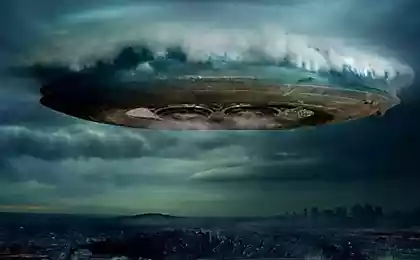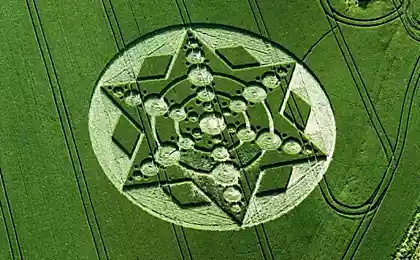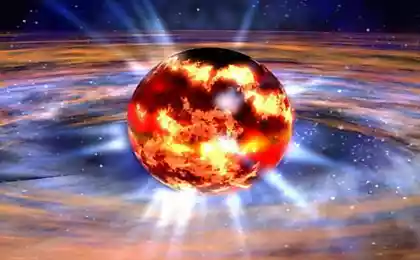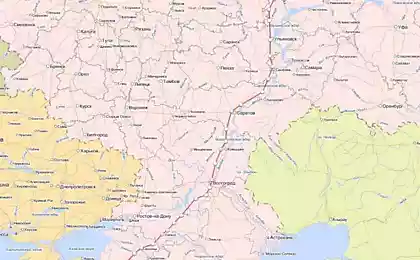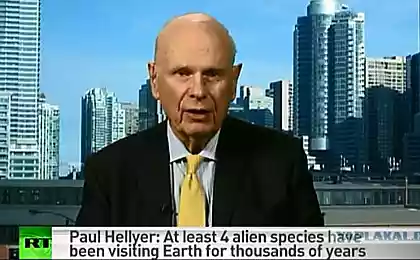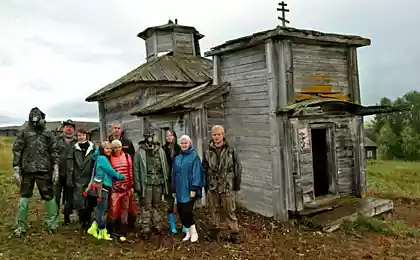456
As we have seen aliens.
Messenger, spacecraft NASA, which has the mission of monitoring the small stone fragments or vulcanoids, in the space between Mercury and the Sun, in order advance to the orbit of Mercury photographed the Earth and the Moon from a distance of 114 million miles (183, 5 million km), informs Daily Mail . That is how our planet looks from afar, just so it could see the aliens who are interested solar system.
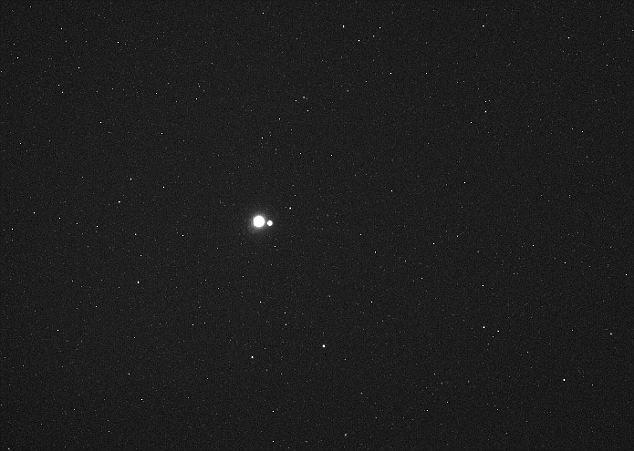
No vulcanoid, generally speaking, not yet discovered, but scientists believe that they exist in this interval. The position in space, which proved Messenger, allows him to see space objects that until now could not see any devices running mankind.
The way the device assumes one circled the Earth, two flybys of Venus and three of Mercury flyby. He uses the gravity of Earth and Venus, to slightly change the course of the time of entering into the orbit of Mercury, to be held in March 2011.
Meanwhile, yesterday it was reported that scientists were forced to change their ideas about the age of the solar system. According to RIA "Novosti", it turned out that he was 4, 5.682 trillion years, that is, 2 million years older than previously thought (to be precise, the difference amounts to a figure between 0, 3, and 1, 9 million years). An article about the opening of astronomers has been published in the journal Nature Geoscience.
According to the publication National Geographic News, researchers Audrey Bouvier (Audrey Bouvier) and Meenakshi Wadhwa (Meenakshi Wadhwa) from the Center for the study of meteorites at the State University of Arizona (Arizona State University's Center for Meteorite Studies), the United States, were able to accurately determine the age of the inclusions in the chondrite meteorite under called NWA 2364, weighing 1, 5 kg, found in 2004 in Morocco. They used the method of determining the age is based on the ratio of the isotopes of lead, aluminum, and magnesium.
Offset the age of our solar system is, in particular, that the original cloud from which the planets, contained twice as much as previously thought, iron-60, a rare isotope of space, the source of which in the universe are supernovae. Hence the conclusion that the solar system was formed by a series of supernova explosions, rather than thickening of the dust cloud, as previously thought.
Source:

No vulcanoid, generally speaking, not yet discovered, but scientists believe that they exist in this interval. The position in space, which proved Messenger, allows him to see space objects that until now could not see any devices running mankind.
The way the device assumes one circled the Earth, two flybys of Venus and three of Mercury flyby. He uses the gravity of Earth and Venus, to slightly change the course of the time of entering into the orbit of Mercury, to be held in March 2011.
Meanwhile, yesterday it was reported that scientists were forced to change their ideas about the age of the solar system. According to RIA "Novosti", it turned out that he was 4, 5.682 trillion years, that is, 2 million years older than previously thought (to be precise, the difference amounts to a figure between 0, 3, and 1, 9 million years). An article about the opening of astronomers has been published in the journal Nature Geoscience.
According to the publication National Geographic News, researchers Audrey Bouvier (Audrey Bouvier) and Meenakshi Wadhwa (Meenakshi Wadhwa) from the Center for the study of meteorites at the State University of Arizona (Arizona State University's Center for Meteorite Studies), the United States, were able to accurately determine the age of the inclusions in the chondrite meteorite under called NWA 2364, weighing 1, 5 kg, found in 2004 in Morocco. They used the method of determining the age is based on the ratio of the isotopes of lead, aluminum, and magnesium.
Offset the age of our solar system is, in particular, that the original cloud from which the planets, contained twice as much as previously thought, iron-60, a rare isotope of space, the source of which in the universe are supernovae. Hence the conclusion that the solar system was formed by a series of supernova explosions, rather than thickening of the dust cloud, as previously thought.
Source:



